Visiting Norway soon? Turn your vacation into a Scandinavian culinary adventure with these 11 must-try and easy-to-find food items in Norway.
Trying a foreign country’s food is often one of the top benefits of going through the effort of travelling there. Norway is no different, and if you ever get the chance to visit the country, there are some foods you simply have to sample.

From the snappy bite of a classic pølse (a Norwegian hot dog) to the sweet, twisty temptation of a kanelsnurr (a Norwegian cinnamon bun) we’ve got your foodie itinerary covered.
So, whether you’re planning an actual trip or simply want to travel virtually by reading these lines, get cosy and join us on a journey of culinary discovery.
It would be fair to say that Norway is known more for its breathtaking landscapes than for its cuisine, but there are several local foods that are definitely worth a detour. Whatever your budget, our list will feature something for you.
Norwegian Brown Cheese (Brunost)
You may love it or hate it, but you should not avoid trying brown cheese during your stay in Norway. The first thing to say about this cheese is that it’s technically not cheese in the traditional sense.
Brunost is made from whey, which is the leftover liquid from cheesemaking. The whey is boiled until the liquid reduces and the sugars caramelise, giving it a distinctive pasty texture and butterscotch flavour.
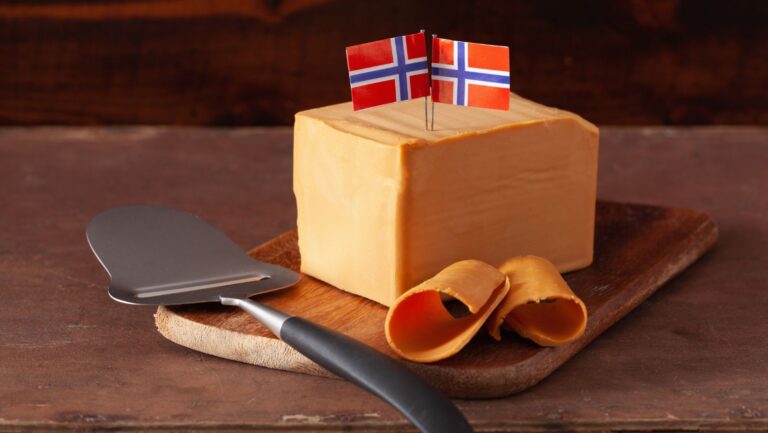
It is typically made from a mix of cow’s and goat’s milk, and can be found in all supermarkets. It is also often served with vafler (waffles) or sveler (a kind of pancake we’ll talk about below).
Cinnamon Bun (Kanelsnurr)
This cinnamon delight is also known under the name skillingsbolle in its typical cinnamon bun spirally incarnation. Another more chaotic-looking version is called kanelknute (cinnamon knot).
They are all mostly similar: a neutral pastry flavoured with sugar, cinnamon and butter. Compared to their American counterparts, they are distinctly less fluffy, less sticky and probably contain much less fat.
They are available in pastry shops and cafes. Some convenience stores such as 7-11 and Narvesen can have them in stock from time to time.
Cloudberries (Multe)
Known as molter/multer, these golden berries are a true Arctic treasure. What makes them special is that they are relatively rare, growing only in marshy terrains for a relatively short season.
You would be forgiven to assume based on looks alone that they taste something like a raspberry. They do not.
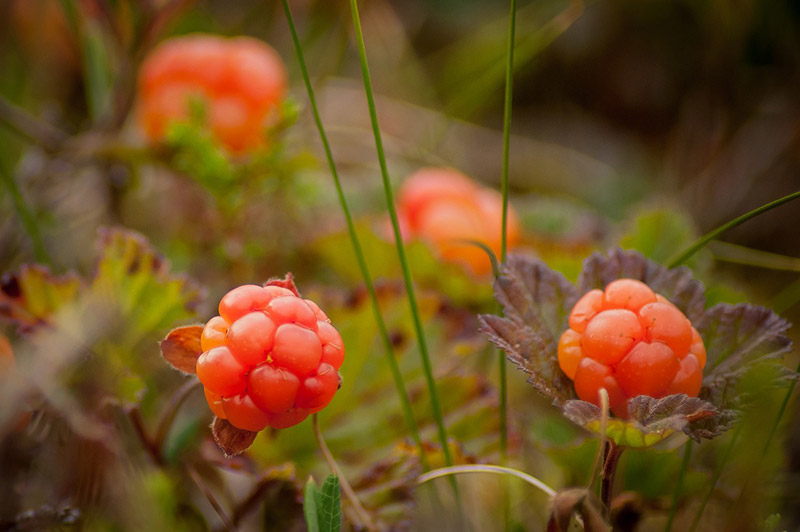
The flavour is difficult to describe. Sweet, yet tart, with a strong, difficult to identify note that comes from their high content in benzoic acid – a natural preservative.
You can buy fresh berries in shops when they are in season (August-September, depending on the area). The rest of the year, you can buy them frozen.
Where these berries truly shine though, is when they are used as an ingredient. I have fond memories of having an absolutely killer cloudberry-based cheesecake, so if you do see that on the menu somewhere, do give it a go.
At the breakfast table of your hotel, you may find cloudberry jam. Also highly recommended is cloudberry yoghurt, which is back on the shelves following a public outcry triggered by its removal from national dairy company Tine’s product line.
Cloudberry liqueurs are also available on the market and offer a different and fun way to taste test these berries – and a nice souvenir or gift to get from the duty free shop on the way out of the country.
Norwegian Waffle (Vaffel)
Giving Norwegian waffles a try in Norway is both a must and super easy to do, given that they are basically everywhere.
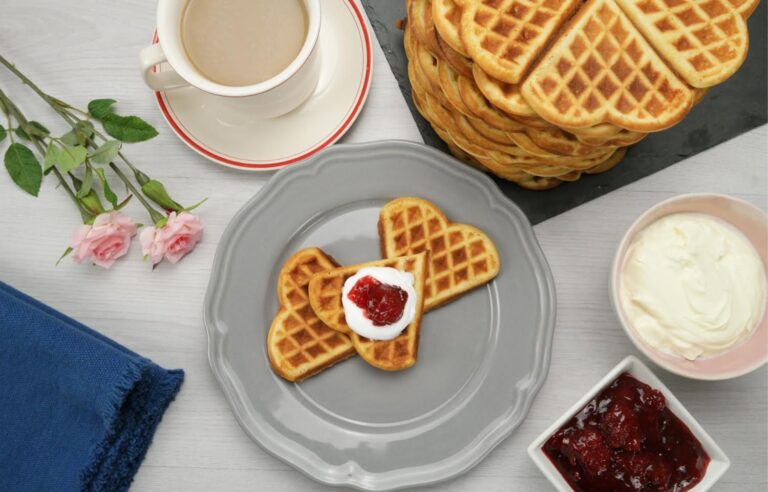
You can find it in cafes, ski lodges, some hotels, farmers’ markets and most Norwegian homes – should you get the chance to be invited.
Norwegian waffles are circular in shape and can be easily sectioned into heart-shaped portions that are usually topped with a garnish.
They are never doused with syrup since they are most commonly eaten by hand like a taco, and not from a plate with a fork and knife like a pancake.
They are thin and soft compared to their American and Belgian counterparts, and have a light vanilla aroma. Common toppings are rømme (Norwegian sour cream), jam, or brown cheese.
Shrimp Sandwich (Rekesmørbrød)
The shrimp open sandwich is a great option for lunch that is widely available in cafes – including museum cafes. Here’s your chance to indulge in two quintessential Scandinavian delights: the open sandwich and fresh seafood.
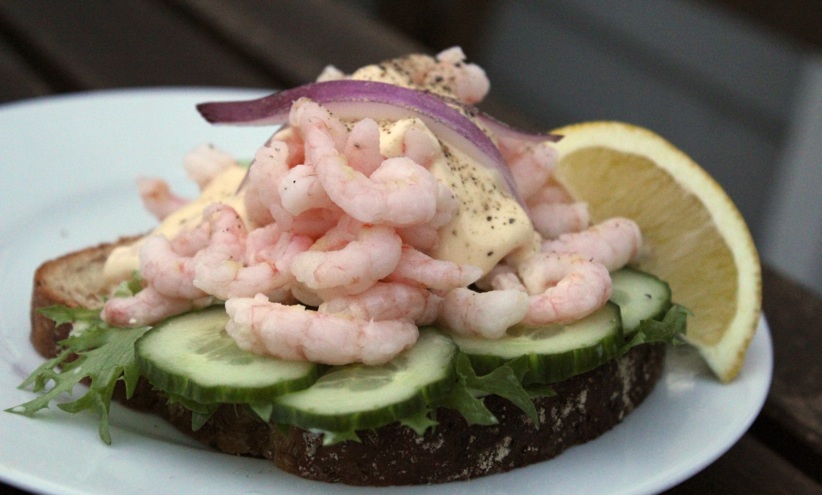
The shrimp open sandwich consists of a piece of fresh crusty bread, generously buttered, and piled high with freshly peeled shrimp. Mayo, fresh dill, cucumber, and squeezed lemon are the standard garnish.
If you have never tried northern shrimps before, now is your chance. They are quite different in texture and flavour to their tropical counterparts, so do give them a go.
Norwegian Hot Dog (Pølse)
Norway’s answer to the hot dog: the humble pølse is a cultural phenomenon. It is available literally everywhere, often for very little money.
They are not wildly different from your typical hot dog, though they are generally milder in taste than you might expect.
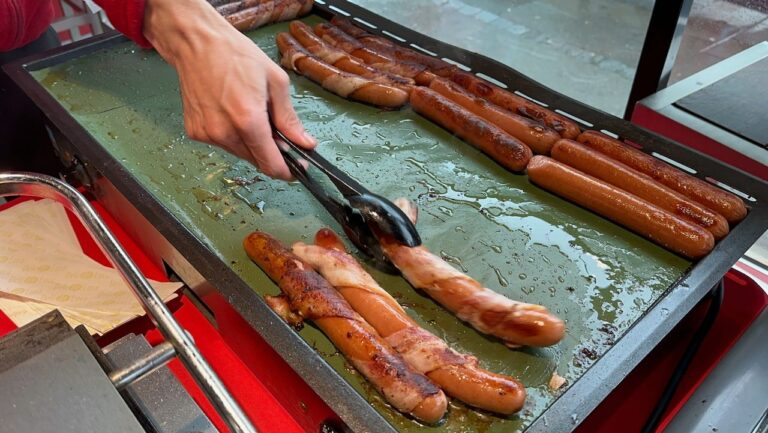
Where they really stand out is in the variety and weirdness of toppings they are served with; fried onions, raw onions, shrimp salad (you read that right) and potato salad are some of the most common.
Pølser are often served with bread, but if you really want to go full norsk, ask for a “lompe” – a sort of traditional potato-based flatbread. It’s the perfect grab-and-go meal for those exploring Norway’s majestic landscapes or cityscapes.
Skolebrød
Another widely available staple, the skolebrød (or skolebolle) is a delightful Norwegian treat that’s sure to bring a smile to your face.
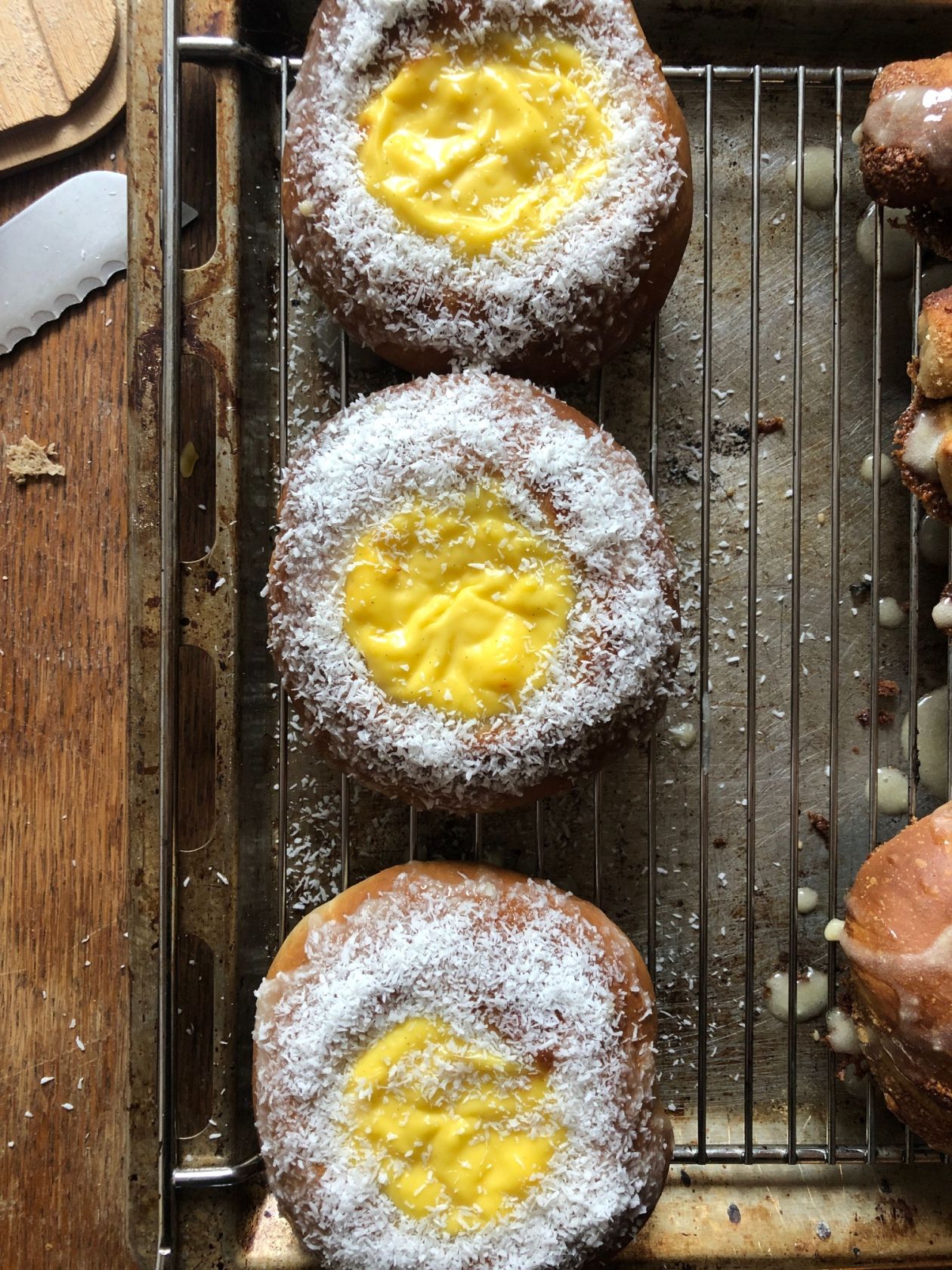
It consists of a soft, fluffy bun, topped with rich vanilla custard, glazed with a simple frosting and sprinkled with coconut shavings.
After travelling around Norway and seeing this pastry absolutely everywhere, you’d be forgiven for thinking that it’s several hundred years old. But it was actually created in the 1950s.
Fish Soup (Fiskesuppe)
If you are at all a seafood lover, you must try Norwegian fish soup. It generally comes in two types: a creamy, velvety white soup and a rich, tomato-based broth.
In both cases, fish stock is the foundation, and chunks of fish and seafood are the main attraction (usually cod, salmon and shrimp). Vegetables such as potatoes, carrots and leeks are also commonly used.
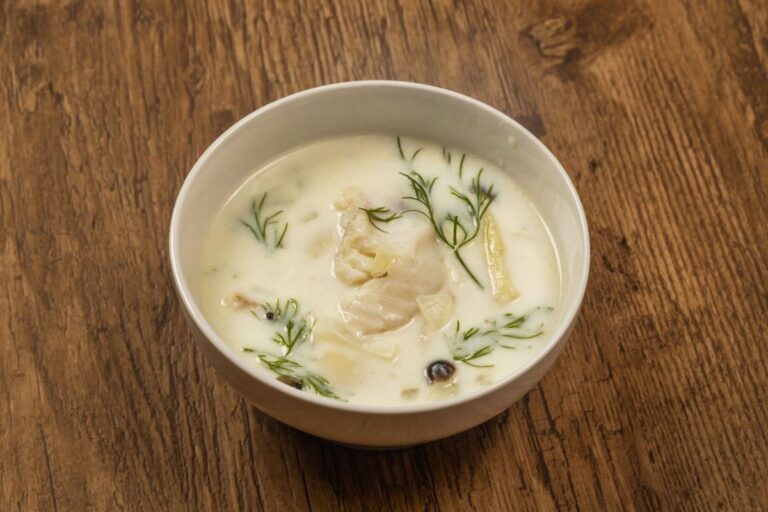
Norwegian fish soup is one of those dishes that can be found both in simple cafes and fancy restaurants. Every establishment has their own version of it, so you can try it multiple times and experience something new every time.
Svele
Sveler are very similar to American pancakes in shape and texture. They consist of a flour and egg-based batter, cooked on both sides in the pan.
Baking powder gives them a fluffiness that is very similar to that of American pancakes. Where there is a big difference is in the toppings they are served with.
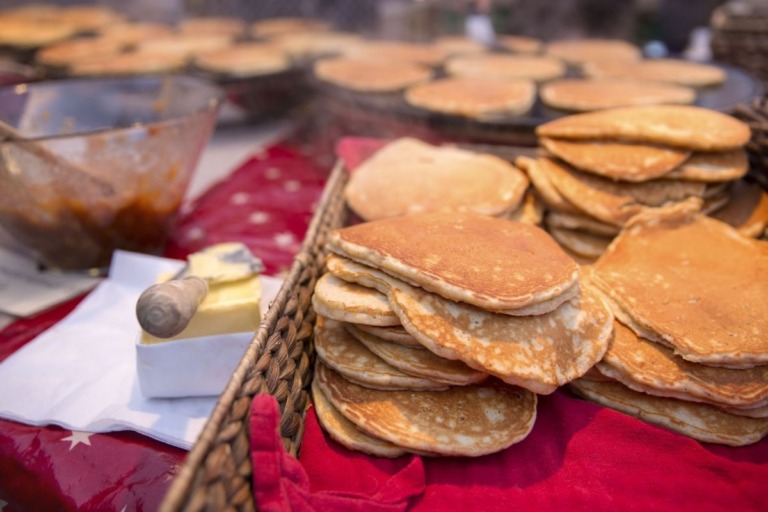
The topping of choice is a mix of butter and sugar. Brown cheese is also common, as well as jam and sour cream.
Instead of being eaten from a plate with cutlery, they are folded in half and held in one hand. They are a staple of ferries all along the fjord coast (especially in the northern part, close to Ålesund).
Reindeer Stew (Reinsdyrgryte)
In the mood for something really Norwegian? It’s hard to get more authentic Instagram-fodder than reindeer stew.
This rich, slow-cooked stew, mixes lean gamey reindeer meat with a blend of root vegetables, mushrooms, and a mix of herbs. Some versions include a splash of red wine or juniper berries.
It is often served with flatbrød (crispy flat bread) and lingonberry jam. Just like fiskesuppe, you can try reindeer stew at several different establishments and feel like you’re eating a different dish every time.
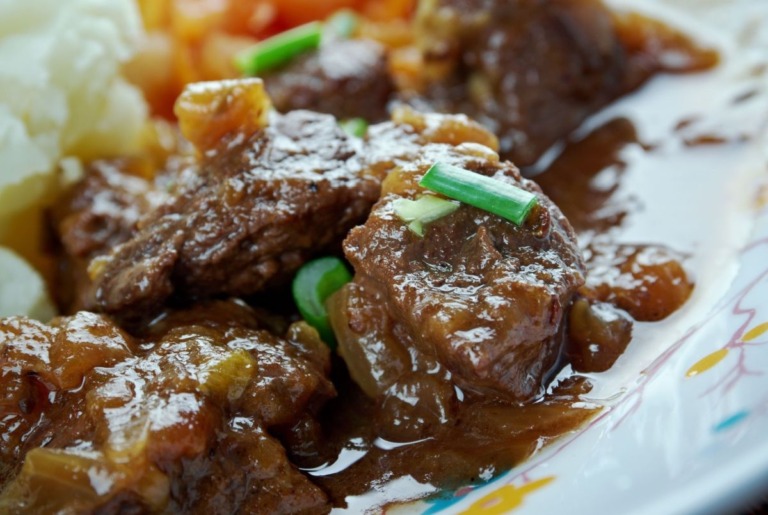
The dish is a comforting, heartwarming delight, especially on chilly Norwegian evenings. Whether tried in a cosy mountain cabin or a local restaurant, a bowl of reinsdyrgryte is a must for those looking to savour the authentic, rustic flavours of Norway’s culinary heritage.
Lefse
This is a word we don’t even feel the need to translate, since the Norwegian lefse is hugely famous among people with a Norwegian heritage, especially in the US.
The lefse is a soft, tender flatbread, made from potatoes, flour, and a touch of butter and milk.
It’s quite neutral in flavour, which makes it a versatile pastry. More often than not, it is garnished with a mix of butter and sugar.
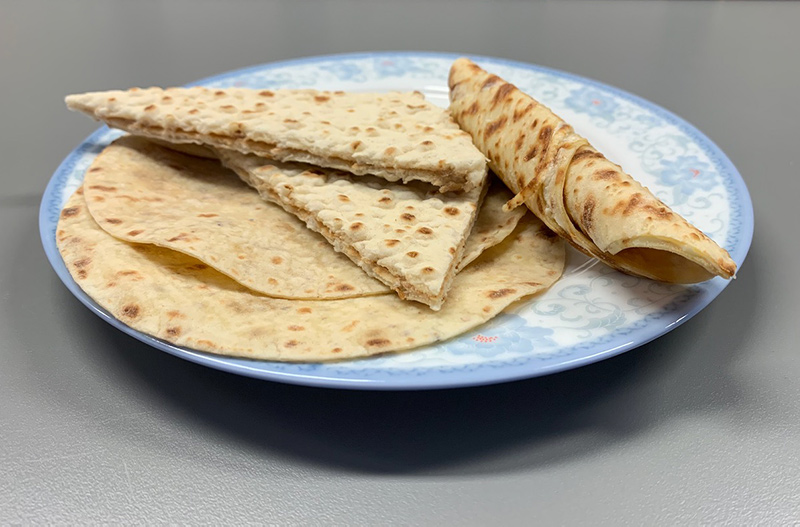
It is available in all grocery stores and in cafes, and can also be found in train stations, ferries and hospital cafeterias.
Michelin-starred Restaurants
Okay, this is technically not a dish, but did you know that Norway boasts no fewer than 17 Michelin-starred restaurants?
We felt we had to include them because so far, this list has consisted of low to mid-range options that don’t give the entire Norwegian culinary picture.
So, if money is no concern for you, here is a perfect occasion to try the absolute best of what Norway’s gourmet scene has to offer. Expect locally sourced ingredients crafted into exquisite culinary creations and thoughtfully paired with exceptional wines.
Also expect an eye-watering bill at the end. If you can afford it, an evening at one of Norway’s Michelin-starred establishments is an experience to remember.
